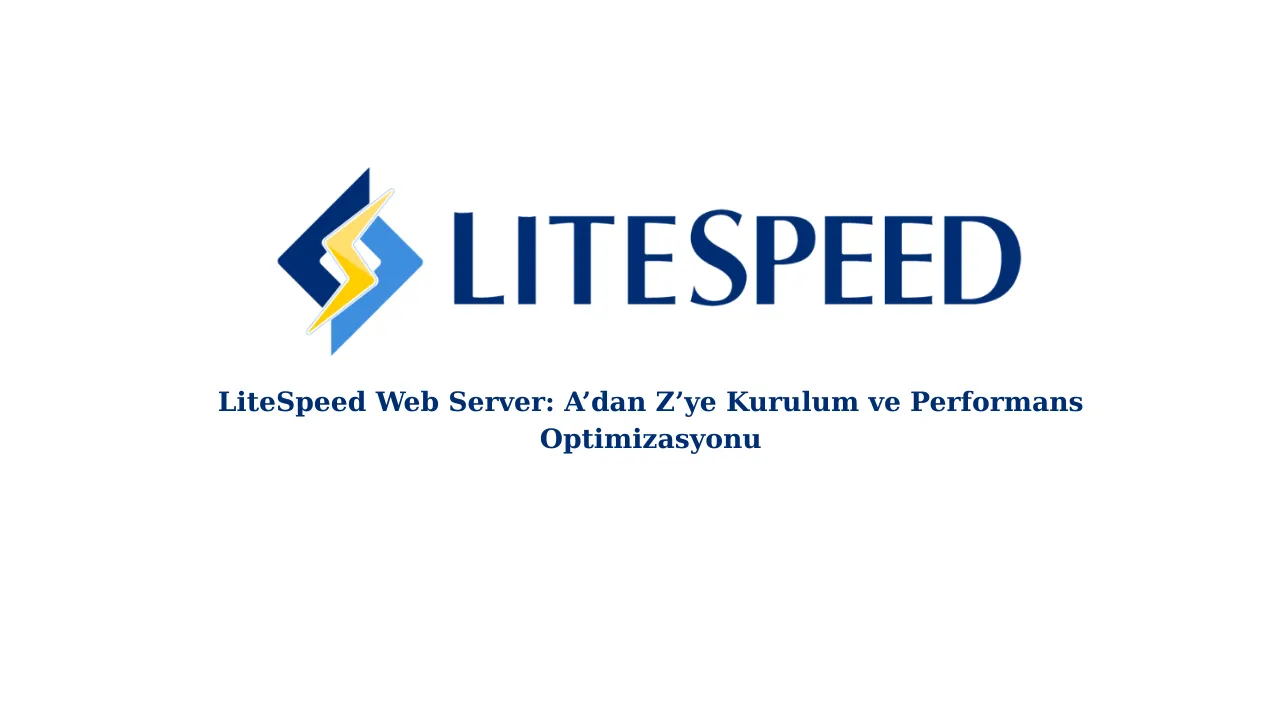
LiteSpeed Web Server: Installation and Performance Optimization Guide from A to Z
İçindekiler
LiteSpeed Web Server: Installation and Performance Optimization Guide from A to Z
Welcome to the ultimate guide on installing and optimizing LiteSpeed Web Server! This comprehensive guide will walk you through every step, from initial setup to advanced performance tuning, ensuring your website runs at peak efficiency. Whether you're a seasoned system administrator or a beginner, this guide will provide you with the knowledge you need to harness the power of LiteSpeed.
Table of Contents
- Introduction to LiteSpeed Web Server
- Prerequisites
- Installation
- Performance Optimization
- Security Considerations
- Monitoring and Maintenance
- Troubleshooting Common Issues
- Conclusion
Introduction to LiteSpeed Web Server
LiteSpeed Web Server (LSWS) is a high-performance web server known for its speed, scalability, and security. It's a popular alternative to Apache and Nginx, offering significant performance improvements, especially when combined with LiteSpeed Cache (LSCache). LSWS is compatible with Apache’s .htaccess files, making migration relatively seamless.
Prerequisites
Before you begin, ensure you have the following:
- A server running a Linux distribution (e.g., CentOS, Ubuntu, Debian).
- Root access or sudo privileges.
- A valid domain name (optional, but recommended for testing).
- Basic knowledge of the command line.
Installation
Installing LiteSpeed Web Server
The installation process varies slightly depending on your Linux distribution. Here's a general guide:
- Download the LiteSpeed Web Server package: Visit the LiteSpeed website and download the appropriate package for your operating system. You will need to create an account and obtain a serial number. A free OpenLiteSpeed version is also available.
- Extract the package: Use the following command (adjust the filename accordingly):
tar -zxvf lsws-x.x.x-enterprise-linux-x86_64.tar.gz - Navigate to the extracted directory:
cd lsws-x.x.x - Run the installation script:
./install.sh - Follow the on-screen instructions: The installer will guide you through the configuration process, including setting the admin username and password.
Note: For OpenLiteSpeed, the installation process is similar, but you'll typically use your distribution's package manager (e.g., apt for Ubuntu/Debian, yum/dnf for CentOS/RHEL) to install it from the LiteSpeed repository.
Initial Configuration
After installation, access the LiteSpeed WebAdmin Console through your browser. The default URL is https://your_server_ip:7080. Log in with the username and password you set during installation.
Key initial configuration steps:
- Set up virtual hosts: Define virtual hosts for each of your websites. This involves specifying the document root (where your website files are located), domain name, and other settings.
- Configure listeners: Listeners define the ports on which LiteSpeed will listen for incoming requests (typically port 80 for HTTP and port 443 for HTTPS).
- Install an SSL certificate: Enable HTTPS for secure communication. You can use Let's Encrypt for free SSL certificates.
Performance Optimization
Now that LiteSpeed is installed, let's dive into optimizing its performance.
Caching Strategies
Caching is crucial for improving website performance. LiteSpeed offers several caching options.
LiteSpeed Cache (LSCache)
LSCache is a built-in caching engine designed specifically for LiteSpeed Web Server. It's highly efficient and integrates seamlessly with popular content management systems (CMS) like WordPress, Joomla, and Drupal.
WordPress Configuration:
- Install the LiteSpeed Cache plugin from the WordPress plugin repository.
- Activate the plugin.
- Configure the plugin settings according to your needs. Key settings include:
- Cache Everything: Enable this option to cache all pages and posts.
- Purge Settings: Configure when the cache should be purged (e.g., when a post is published or updated).
- ESI (Edge Side Includes): Use ESI to cache dynamic content fragments separately.
Object Cache
Object caching stores the results of database queries in memory, reducing the load on your database server. Memcached and Redis are popular object caching solutions that can be used with LiteSpeed.
Configuration Example (Redis):
- Install the Redis server on your server.
- Install a Redis object cache plugin for your CMS (e.g., Redis Object Cache for WordPress).
- Configure the plugin to connect to your Redis server.
Gzip Compression
Gzip compression reduces the size of your website's files before they are sent to the browser, resulting in faster loading times. LiteSpeed supports Gzip compression out of the box.
Enable Gzip Compression in WebAdmin Console:
- Navigate to Server Configuration > Tuning.
- Enable "Enable GZIP Compression".
- Adjust the GZIP compression level as needed (higher levels offer better compression but require more CPU).
HTTP/2 & HTTP/3
HTTP/2 and HTTP
 Turkey (Türkçe)
Turkey (Türkçe) Germany (German)
Germany (German) Worldwide (English)
Worldwide (English)




Yorumlar